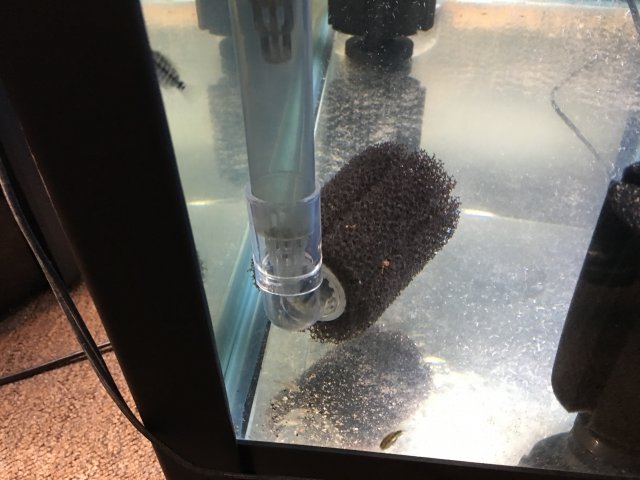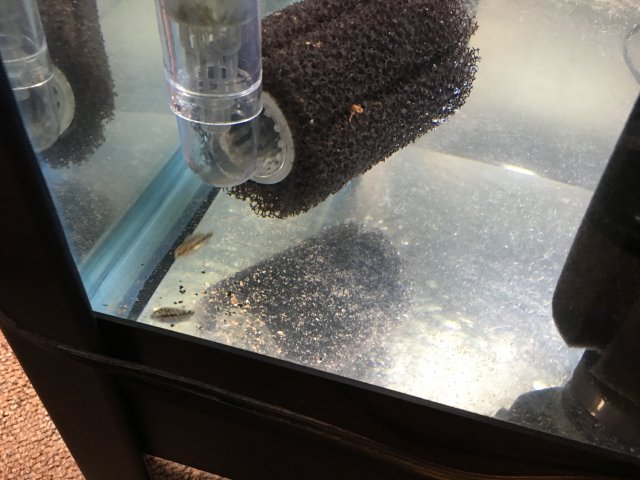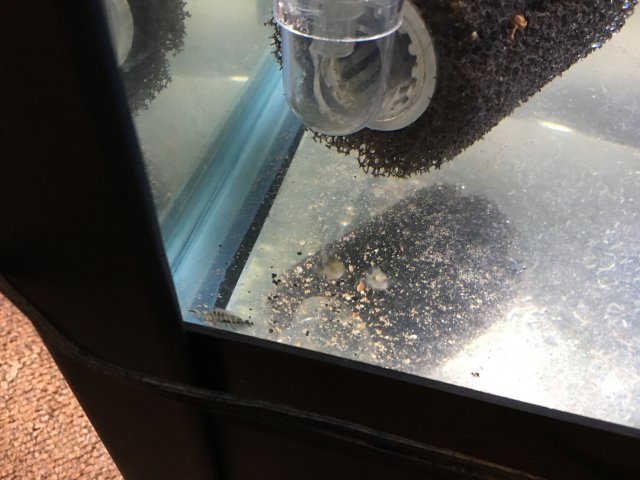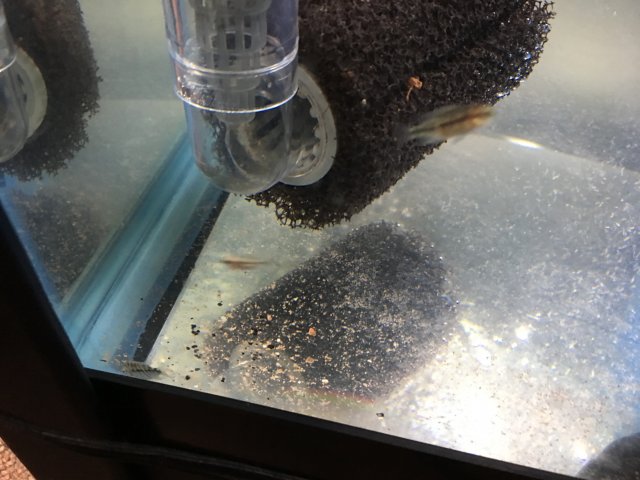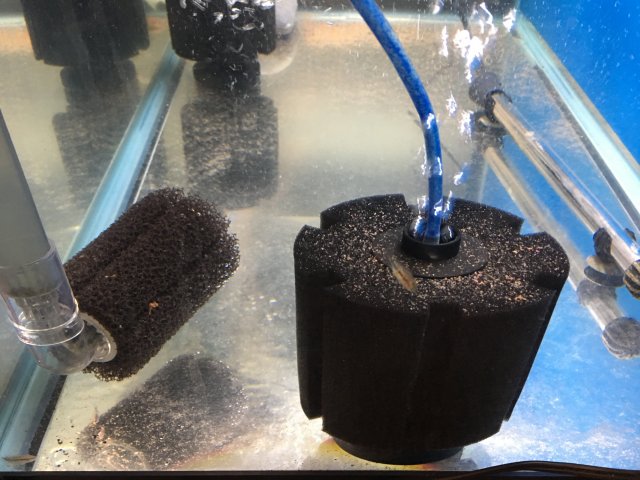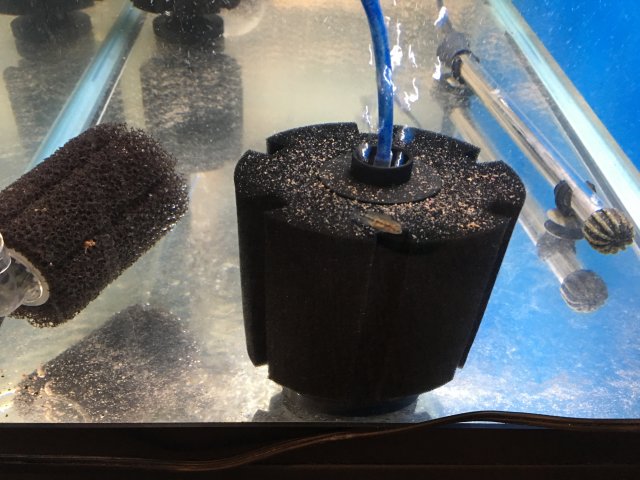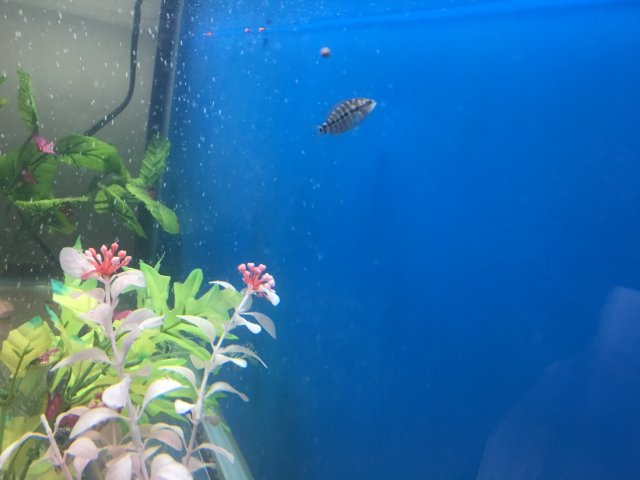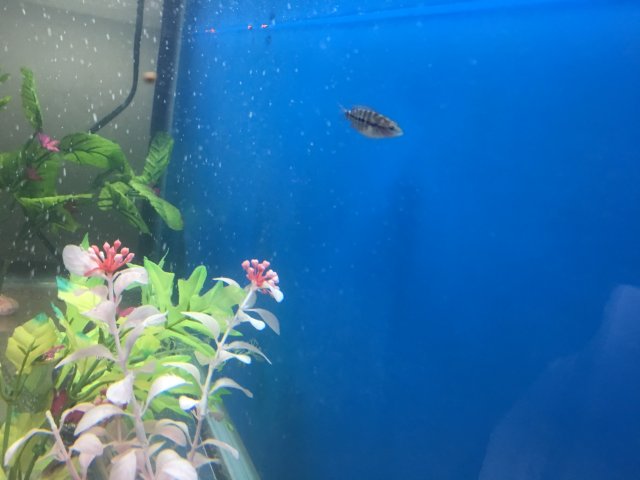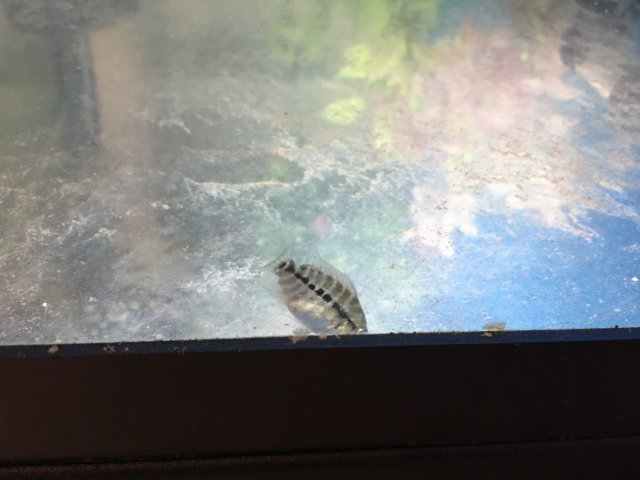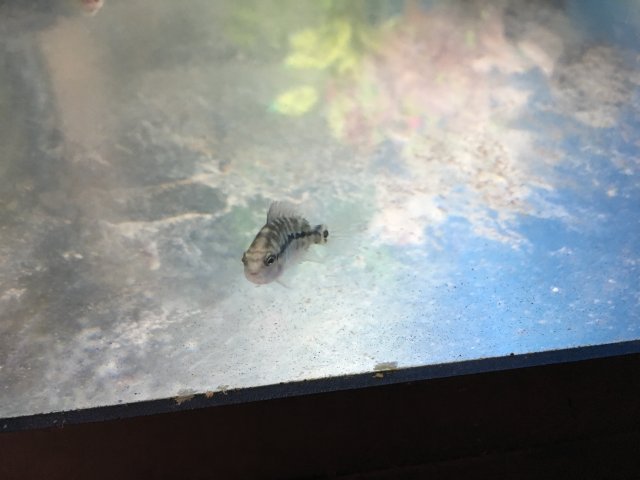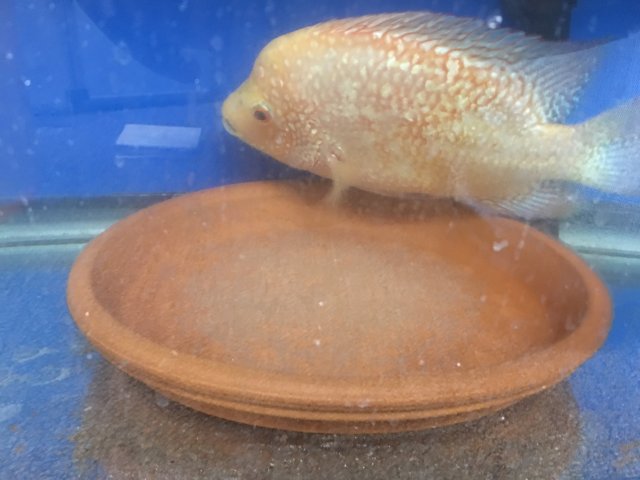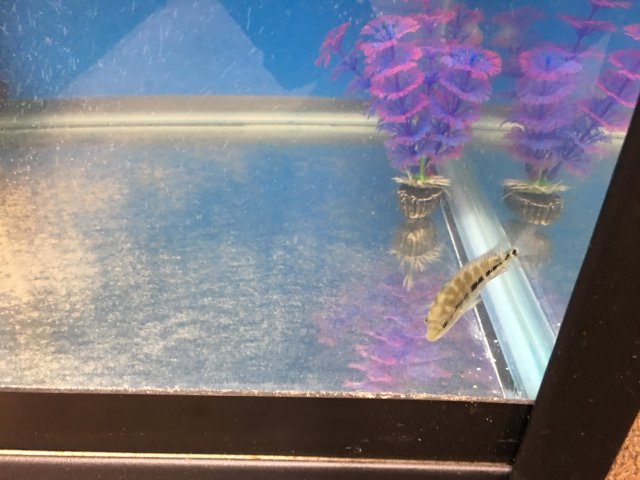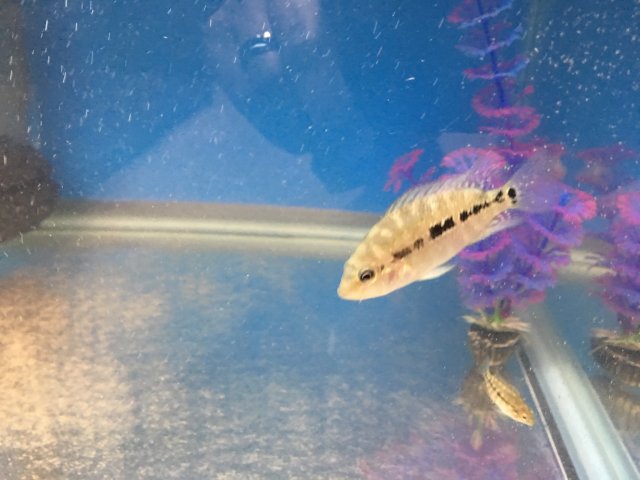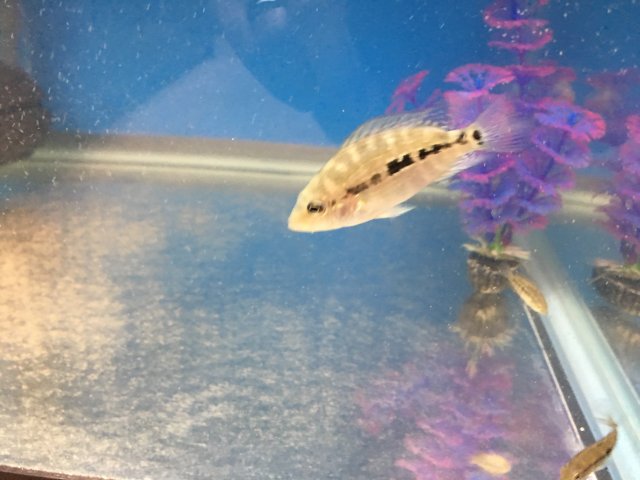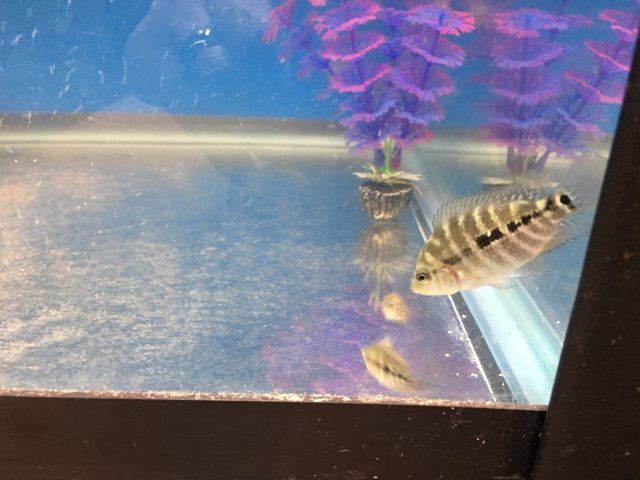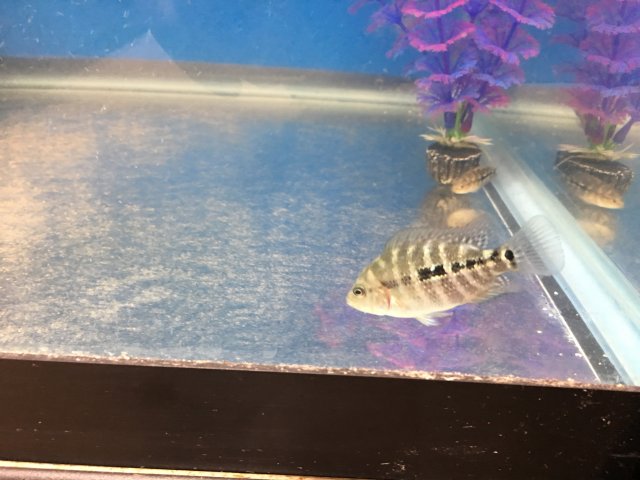Red Texas pair
- Thread starter headlessblade
- Start date
One of the very best signs of a healthy aquarium is fish which are ready to breed. It is many aquarists' dream to successfully breed fish at home. Though fish reproduce in a number of different ways there are several basic things you can do which will universally improve their chances.
It may sound obvious, but before you can breed your fish you will need at least one male and one female and their are pet shops or store who arrange or package that already some intructions are noted on labels printing some are on a handbook.
Determining the sex of individual fish is not always easy (the general rule is that female genitals protrude a little out of the body, in a small round bump, whilst male ones don't). Sex markings vary by species and with some species there is very little visible difference, so you'll have to make your decisions based on how the fish behave.
Observing behaviour is essential to successful breeding anyway, because most fish don't want to breed with just any other fish. They can be quite picky, and will be disinterested or even aggressive towards unsuitable individuals. Signs that fish are compatible can include frequent close physical contact, non-aggressive chasing (without biting but with some nudging of the belly) and possessiveness (driving away other fish who attempt social contact).
Some species for pairs whilst in others it is usual for a female who is ready to breed to attract the attention of several males. In this case you should aim to breed from the whole group, as the fittest males will usually be the ones most successful at fertilisation.
Spawning Tanks
It is possible to breed fish in your main aquarium, but the chances of doing so successfully are slim, as eggs and fry are liable to be eaten by other fish (or even by their parents).
For this reason most aquarists prefer to set up spawning tanks. These should be designed to replicate as closely as possible the environment in which that species of fish would breed in the wild, but there are several other things you can do to increase your chances of success.
Fish can be divided into two groups - those who care for their young and those who don't. A spawning tank for the former group should be designed to provide a suitable living environment for several months.
It should be seeded with gravel from the main aquarium (to help establish a suitable ecosystem) and should contain plants and places for the fish to hide. This is particularly important for nest-building fish, who will need materials from which to construct their nests before they are prepared to breed.
For fish who don't care for their young, the principal of the spawning tank is very different. The tank should contain a layer of mesh or substrate about one inch from the bottom which the fish can't pass through. This means that their eggs will fall down out of reach where they cannot be eaten.
The adults should then be removed from the tank before the eggs have time to hatch, and the fry should be raised separately from the adults until they reach a size where they can look after themselves.
Some fish give birth to live young rather than laying eggs. Most livebearers are extremely fertile and easy to breed and care for their young.
Some fish protect their young by carrying them in their mouths. Make sure you know what to expect from the species you are attempting to breed, and don't be alarmed if they do this.
Raising Fry
As fish reproductive strategies vary, so do their fry. Some species lay vast numbers of eggs of which only about five percent develop into healthy young. This is most common in those species which don't care for their young, so these are the sort of fry you are most likely to have to look after directly.
You shouldn't expect to be able to save all of them, but you can increase their chances by carefully monitoring the condition of their tank, noting that younger fish are more vulnerable to changes in temperature and water chemistry as well as to disease.
Don't worry if the fry look strange to begin with; few species resemble their parents when they're born, especially as they'll be carrying yolk sacs attached to their bodies for their first two to four days of life.
Once the yolk sacs are gone, you'll need to provide your fry with a suitable food. Most fry are unable to eat normal adult fish foods, but there are a range of fry foods available which consist of small nutritious particles which you can disperse in the water. Make sure to provide food frequently. Some individuals will grow faster than others, so you may need to segregate them to prevent them from eating each other.
It may sound obvious, but before you can breed your fish you will need at least one male and one female and their are pet shops or store who arrange or package that already some intructions are noted on labels printing some are on a handbook.
Determining the sex of individual fish is not always easy (the general rule is that female genitals protrude a little out of the body, in a small round bump, whilst male ones don't). Sex markings vary by species and with some species there is very little visible difference, so you'll have to make your decisions based on how the fish behave.
Observing behaviour is essential to successful breeding anyway, because most fish don't want to breed with just any other fish. They can be quite picky, and will be disinterested or even aggressive towards unsuitable individuals. Signs that fish are compatible can include frequent close physical contact, non-aggressive chasing (without biting but with some nudging of the belly) and possessiveness (driving away other fish who attempt social contact).
Some species for pairs whilst in others it is usual for a female who is ready to breed to attract the attention of several males. In this case you should aim to breed from the whole group, as the fittest males will usually be the ones most successful at fertilisation.
Spawning Tanks
It is possible to breed fish in your main aquarium, but the chances of doing so successfully are slim, as eggs and fry are liable to be eaten by other fish (or even by their parents).
For this reason most aquarists prefer to set up spawning tanks. These should be designed to replicate as closely as possible the environment in which that species of fish would breed in the wild, but there are several other things you can do to increase your chances of success.
Fish can be divided into two groups - those who care for their young and those who don't. A spawning tank for the former group should be designed to provide a suitable living environment for several months.
It should be seeded with gravel from the main aquarium (to help establish a suitable ecosystem) and should contain plants and places for the fish to hide. This is particularly important for nest-building fish, who will need materials from which to construct their nests before they are prepared to breed.
For fish who don't care for their young, the principal of the spawning tank is very different. The tank should contain a layer of mesh or substrate about one inch from the bottom which the fish can't pass through. This means that their eggs will fall down out of reach where they cannot be eaten.
The adults should then be removed from the tank before the eggs have time to hatch, and the fry should be raised separately from the adults until they reach a size where they can look after themselves.
Some fish give birth to live young rather than laying eggs. Most livebearers are extremely fertile and easy to breed and care for their young.
Some fish protect their young by carrying them in their mouths. Make sure you know what to expect from the species you are attempting to breed, and don't be alarmed if they do this.
Raising Fry
As fish reproductive strategies vary, so do their fry. Some species lay vast numbers of eggs of which only about five percent develop into healthy young. This is most common in those species which don't care for their young, so these are the sort of fry you are most likely to have to look after directly.
You shouldn't expect to be able to save all of them, but you can increase their chances by carefully monitoring the condition of their tank, noting that younger fish are more vulnerable to changes in temperature and water chemistry as well as to disease.
Don't worry if the fry look strange to begin with; few species resemble their parents when they're born, especially as they'll be carrying yolk sacs attached to their bodies for their first two to four days of life.
Once the yolk sacs are gone, you'll need to provide your fry with a suitable food. Most fry are unable to eat normal adult fish foods, but there are a range of fry foods available which consist of small nutritious particles which you can disperse in the water. Make sure to provide food frequently. Some individuals will grow faster than others, so you may need to segregate them to prevent them from eating each other.
F3 or spawn 3? The filial description of a breeding generation is to indicate relation / inbreeding. F3 would mean fry coming from a 3rd generation of a line breeding project.I left her with the eggs that night and she ate them all
Lmao no f3 again
They look and act like fh because that's what they are haha


